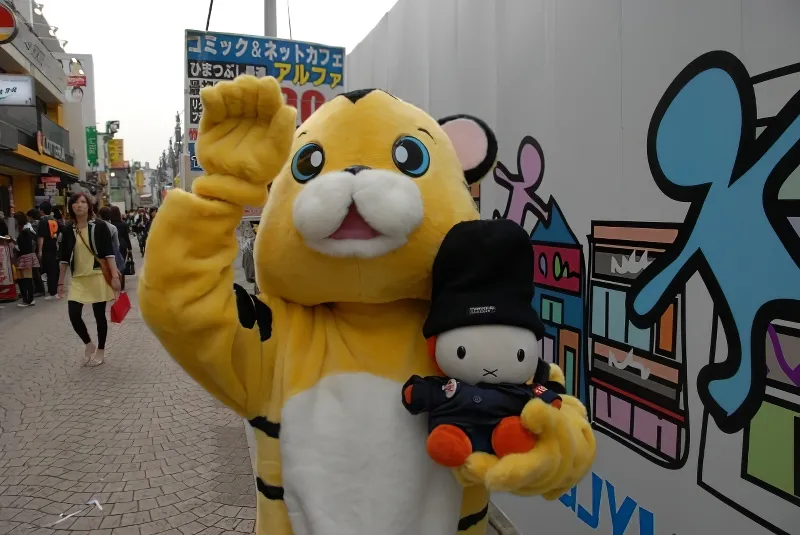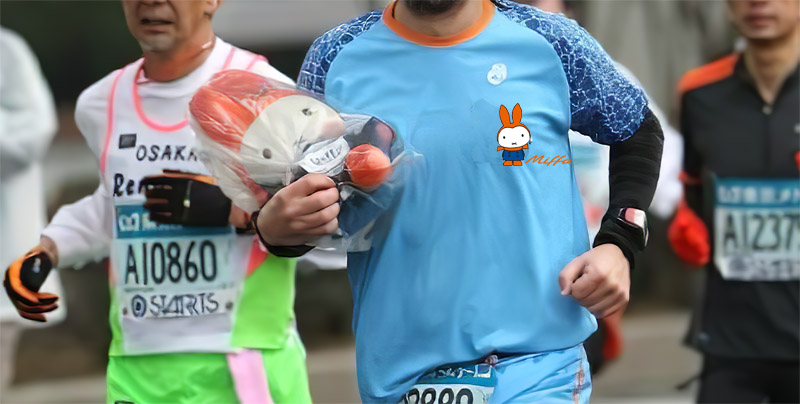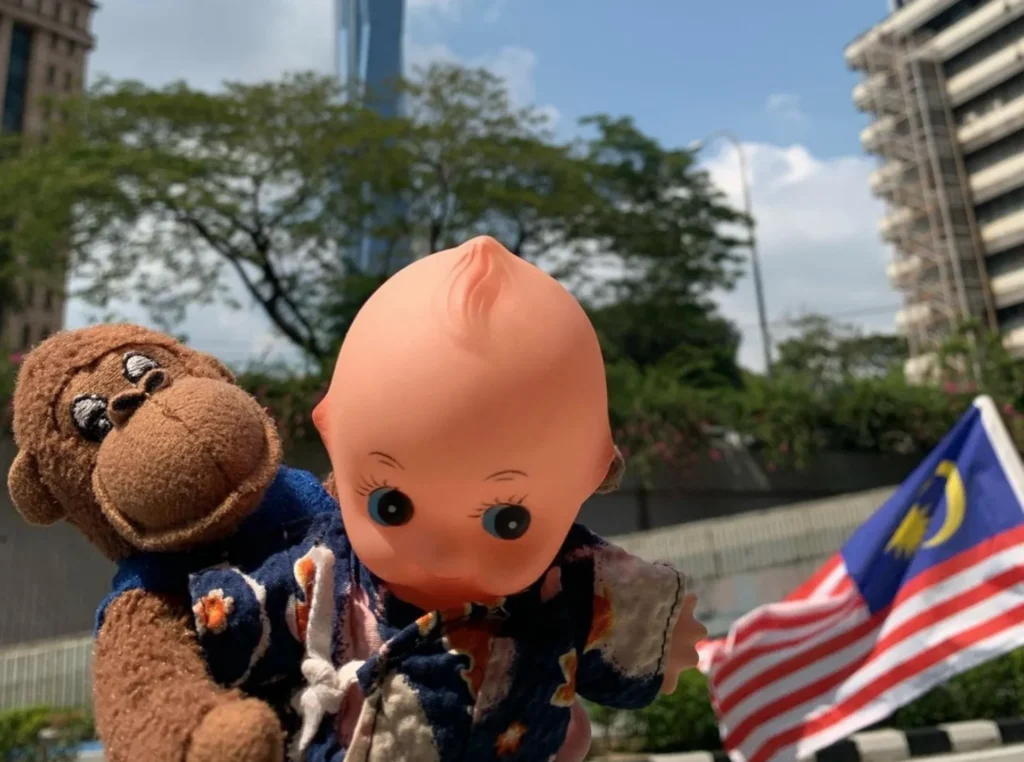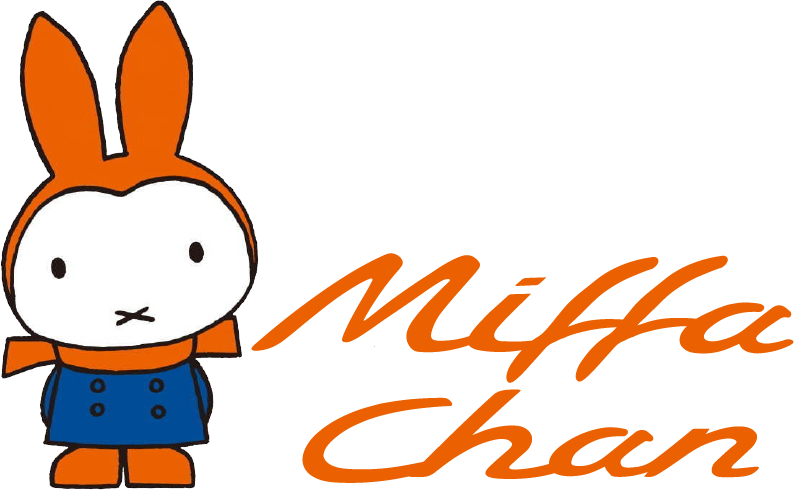Nokia phones and orange caps

Can you spot me?
When my stepparents stumbled upon a hyper cute poster in Hong Kong featuring a Nokia phone with an orange cap, my father immediately assumed it was a Japanese character. However, we were not even in Japan at the time. I wasn’t actually a friend of Hello Kitty, and my ancestors hailed from a country where my mother had studied and mastered its language with a degree in philology.
Despite this, both of my parents were bitten by the cuteness virus, and they secretly adored that iconic cat.

But it wasn’t just Hello Kitty that captured their hearts during this time. Father bunny fell head over heels in love with Kewpie, which he considered the most adorable and cute creature, brimming with love and immense charm.
This experience was just the tip of the iceberg when it came to discovering the world of kawaii culture. We were introduced to a whole new level of cuteness during our travels in South Asia, and it was clear that the Japanese were masters in the art of making the cute even better.
Let me dive deeper into why the Japanese have become the leaders of the kawaii culture movement.
“kawaii” (かわいい)
When it comes to Japanese culture, one thing that stands out is the concept of “kawaii” (かわいい), which means cute, adorable, or lovable. The kawaii culture is a phenomenon that has taken over Japan and has even spread to other parts of the world. Let’s take a closer look at what kawaii culture is, its origins, and why it has become so popular.
Origins of Kawaii Culture
Kawaii culture started to take shape in Japan during the 1970s and 1980s. It emerged as a form of rebellion against the strict social norms and the pressure to conform to them. The youth of Japan began to embrace a more playful, carefree, and innocent aesthetic, which emphasized cuteness, pastel colors, and childlike innocence.
The term “kawaii” was first used in the 1970s by teenage girls who wanted to express their admiration for cute things, like Hello Kitty and other characters from Sanrio.
The kawaii culture became more widespread in the 1980s, with the rise of manga and anime, which featured cute and lovable characters like Pikachu, Sailor Moon, and Doraemon.
Today, kawaii culture is an integral part of Japanese society, and it can be seen in fashion, food, technology, and even in the way people behave. The concept of kawaii has also gained popularity outside of Japan, with many people around the world embracing this adorable trend.
Father bunny run Tokyo Marathon last kilometers holding Miffa and the spectators literally went totally crazy with people supporting them as real heroes.

Why is Kawaii Culture So Popular?
There are several reasons why kawaii culture has become so popular over the years. One of the main reasons is that it offers an escape from the pressures of everyday life. The cute and adorable aesthetic provides a sense of comfort and relaxation, making people feel happy and content.
Kawaii culture is also associated with positive values like kindness, gentleness, and empathy. These values are seen as important in Japanese society, and they are reflected in the cute and innocent characters that are part of the kawaii culture.
In addition, kawaii culture has become popular among young people as a form of self-expression. By embracing the kawaii aesthetic, young people can express their individuality and stand out from the crowd. The kawaii culture offers a sense of belonging and acceptance, which is especially important for young people who are still trying to find their place in the world.

Miffy vs Kitty, at some point things weren’t easy for them
Like Hello Kitty, Miffy has become an iconic character in Japan and has gained a following in many other countries as well. Her popularity is due in part to her cute and innocent appearance, which is a common characteristic of kawaii culture. Miffy’s design is also easily recognizable, with her distinctive shape and signature X-shaped mouth.
Miffy’s popularity has led to the creation of a wide range of merchandise, including plush toys, clothing, stationery, and home goods. In Japan, there is even a Miffy-themed cafe where fans can enjoy food and drinks inspired by the character. Even further they have made Miffy themed hotels.
Despite being a Dutch character, Miffy’s popularity in Japan has helped to further solidify the country’s love for all things kawaii. And just like Hello Kitty, Miffy has become a symbol of childhood innocence and happiness that is loved by people of all ages.
A final thought from master Kewpie, the oldest and cutest
The popularity of kawaii culture in Japan and around the world is a reflection of our collective desire for cuteness, innocence, and happiness. Whether it’s through characters like Hello Kitty or Miffy, or through other forms of kawaii culture such as fashion and music, the appeal of this aesthetic shows no signs of slowing down.
Kewpie

